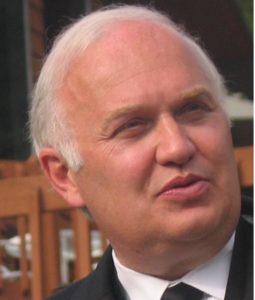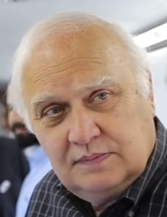Leeham News and Analysis
There's more to real news than a news release.
 Leeham News and Analysis
Leeham News and Analysis
- GE testing of giant GE9X engine aims for maturity at entry into service June 30, 2025
- Bjorn’s Corner: Air Transport’s route to 2050. Part 28. June 27, 2025
- Parent agency, FAA often at odds as politics outweighs safety June 26, 2025
- Electric Flight and the Ugly Duckling June 25, 2025
- Engine makers tout “Plan A” but have “Plan B” backups in R&D June 23, 2025
Pontifications: Boeing’s sense of invincibility
Sept. 11, 2017, © Leeham Co.: I can’t help but get the feeling that Boeing feels it’s invincible these days.
And why not?
Boeing racked up some impressive victories and took some hardline positions in recent months that move it forward for its corporate goals.
Posted on September 11, 2017 by Scott Hamilton
Airbus, Boeing cost-cutting
 Sept. 20, 2016: Airbus is planning cost-cutting measures to offset program write-offs and delivery delays, according to The Financial Times.
Sept. 20, 2016: Airbus is planning cost-cutting measures to offset program write-offs and delivery delays, according to The Financial Times.
One of these delays involves the well-publicized problems with the Pratt & Whitney Geared Turbo Fan engine on the A320neo.
The CEO of United Technologies, parent of PW, last week said engine deliveries could fall 50-100 engines short of the 200 originally projected for the year, with a likely shortfall of about 50.
The A320neo “gliders” (as an Airbus executive put it) are well known. Bombardier also said it will deliver about half the number of CSeries this year because of GTF issues.
Sam Pearlstein, the aerospace analyst at Wells Fargo, had this synopsis:
Posted on September 20, 2016 by Scott Hamilton
44% supplier shortfall for GTF now showing impact
![]() Sept. 6, 2016, © Leeham Co.: It was a stunning admission, one that produced the biggest headlines at the United Technologies media days in June: 44% of the suppliers on Pratt & Whitney’s Geared Turbo Fan engine weren’t performing to the UTC/PW standards.
Sept. 6, 2016, © Leeham Co.: It was a stunning admission, one that produced the biggest headlines at the United Technologies media days in June: 44% of the suppliers on Pratt & Whitney’s Geared Turbo Fan engine weren’t performing to the UTC/PW standards.
The impact of this was seen today when Bombardier announced it will deliver only half the anticipated 15 C Series this year because of engine delivery issues by PW for the GTF powering the new airplane.
Bombardier and PW pointed the finger at its supply chain for the delays in delivering engines.
Posted on September 6, 2016 by Scott Hamilton
Antonov betting on Western technology
By Bjorn Fehrm
July 14, 2016, ©. Leeham Co, Farnborough Air Show: The company Antonov is world renowned for its rugged transport aircraft. The recent An-124 Ruslan and An-225 Mriya super-heavy transporters are the world’s largest transport aircraft. Both fly daily for the Antonov companies own airline, transporting outsize cargo for companies like Boeing, Airbus, GE, Rolls-Royce and others.
The air freighter company is what keeps Antonov afloat, for it has been hit hard by the fall of the Soviet Union and Ukraine’s decision to split with the Russian Federation and orient itself to the West. Read more
Posted on July 14, 2016 by Bjorn Fehrm
Thinking outside the box at Pratt & Whitney
June 16, 2016, © Leeham Co.: “I’m working on six or eight engines. The more the better.”
![]() This startling statement comes from Alan Epstein, vice president of technology and the environment for Pratt & Whitney.
This startling statement comes from Alan Epstein, vice president of technology and the environment for Pratt & Whitney.
It runs counter to everything the airline industry has believed since the introduction of the twin-engine Boeing 767 was qualified for ETOPS in the early 1980s: fewer engines are better.
Epstein explained his statement during an interview with LNC at the United Technologies Media Days last week in Hartford (CT).
Epstein last year at the same event told LNC he was looking at four-engine technology for future airplanes. We asked him this year if he was still looking at four engines. That’s when he said he was looking at six.
It’s his job to think outside the box. This one clearly qualifies.
Posted on June 16, 2016 by Scott Hamilton
Pontifications: GTF faces steep learning curve on costs
June 13, 2016, © Leeham Co.: The current cost to build the new Pratt & Whitney Geared Turbo Fan engine is $10m per engine.
Greg Hayes, CEO of United Technologies. Photo: Hartford Courant via Google images.
This has to come down by a factor of five, said Greg Hayes, the CEO of United Technologies, parent of PW.
This also illustrates the learning curve experienced by engine OEMs, a topic frequently discussed by the airframe OEMs but not so much by the engine manufacturers.
Hayes made the remarks at the UTC Media Day in Hartford (CT) last week. UTC is the parent of Pratt & Whitney, United Technologies Aerosystems (UTAS) and other non-aviation companies.
Posted on June 13, 2016 by Scott Hamilton
UTAS sees increasing electronic architecture in future airplanes
Subscription Required
Introduction
![]() June 9, 2016, © Leeham Co.: The debate continues whether the next new, clean-sheet airplane will be a Middle of the Market aircraft (MOMA) or replacements for the Airbus A320 and Boeing 737 families.
June 9, 2016, © Leeham Co.: The debate continues whether the next new, clean-sheet airplane will be a Middle of the Market aircraft (MOMA) or replacements for the Airbus A320 and Boeing 737 families.
Along with he studies of new airplanes are those undertaken by suppliers. Electric Systems, a unit of United Technologies Aerosystems (UTAS), is working with the OEMs to determine what level of electric systems will be used in the new aircraft, whatever is selected to go next.
Summary
- Electric systems on the Boeing 787 are up to 80% more efficient than those on the Boeing 777 Classic.
- The 777X retains the Classic systems or commonality.
- Benefits decline the shorter the flight.
Posted on June 9, 2016 by Scott Hamilton
UTC media day 2: GTF hits 99.5% dispatch reliability rates
June 7, 2016: The new Pratt & Whitney Geared Turbo Fan, on seven Airbus A320neos,

Bob Leduc, president of Pratt & Whitney.
have achieved more than 2,000 revenue cycles with no returns or rejected take-offs, says Bob Leduc, president of Pratt & Whitney. The engines have a 99.5% dispatch reliability. The last time this level was achieved was with the introduction of the Boeing 777, which at the same point had a 100% dispatch reliability rate.
Posted on June 7, 2016 by Scott Hamilton
UTC media day 2: PW addresses Under-Performing supply chain
Day 2 of the United Technologies Corp (UTC) Media Days is focused on Pratt & Whitney.
June 7, 2016: Pratt & Whitney officials today clarified an eye-popping statement yesterday by Greg Hayes, CEO of parent United Technologies, that 44% of the suppliers on the new Geared Turbo Fan engine were performing to goals.
Posted on June 7, 2016 by Scott Hamilton





Boeing launches PFS 2.0
Update, 0815 PDT July 7: Boeing Corporate Headquarters responded to our questions. The transcript has been added to the article below.
Boeing wasn’t shy about who it targeted, or punished. Even supply-chain giant United Technologies was placed on Boeing’s no-fly list when it balked at the onerous demand.
Now Boeing is moving forward with PFS 2.0, a second round of demands.
Summary
Read more
21 Comments
Posted on July 7, 2016 by Scott Hamilton
air force tanker, Boeing, Leeham News and Comment, Pacific Northwest Aerospace Alliance, United Technologies
747-8, 787, Boeing, Dave Gitlin, Héroux-Devtek, Jim McNerney, KC-46A, Michel Merluzeau, Pacific Northwest Aerospace Alliance, Partnering for Success, PFS 1.0, PFS 2.0, PNAA, Richard Aboulafia, United Technologies Aerosystems, UTAS